How to clean a weighted blanket: 5 easy steps to wash with care
Follow our expert guide, with five simple steps for washing a weighted blanket with ease
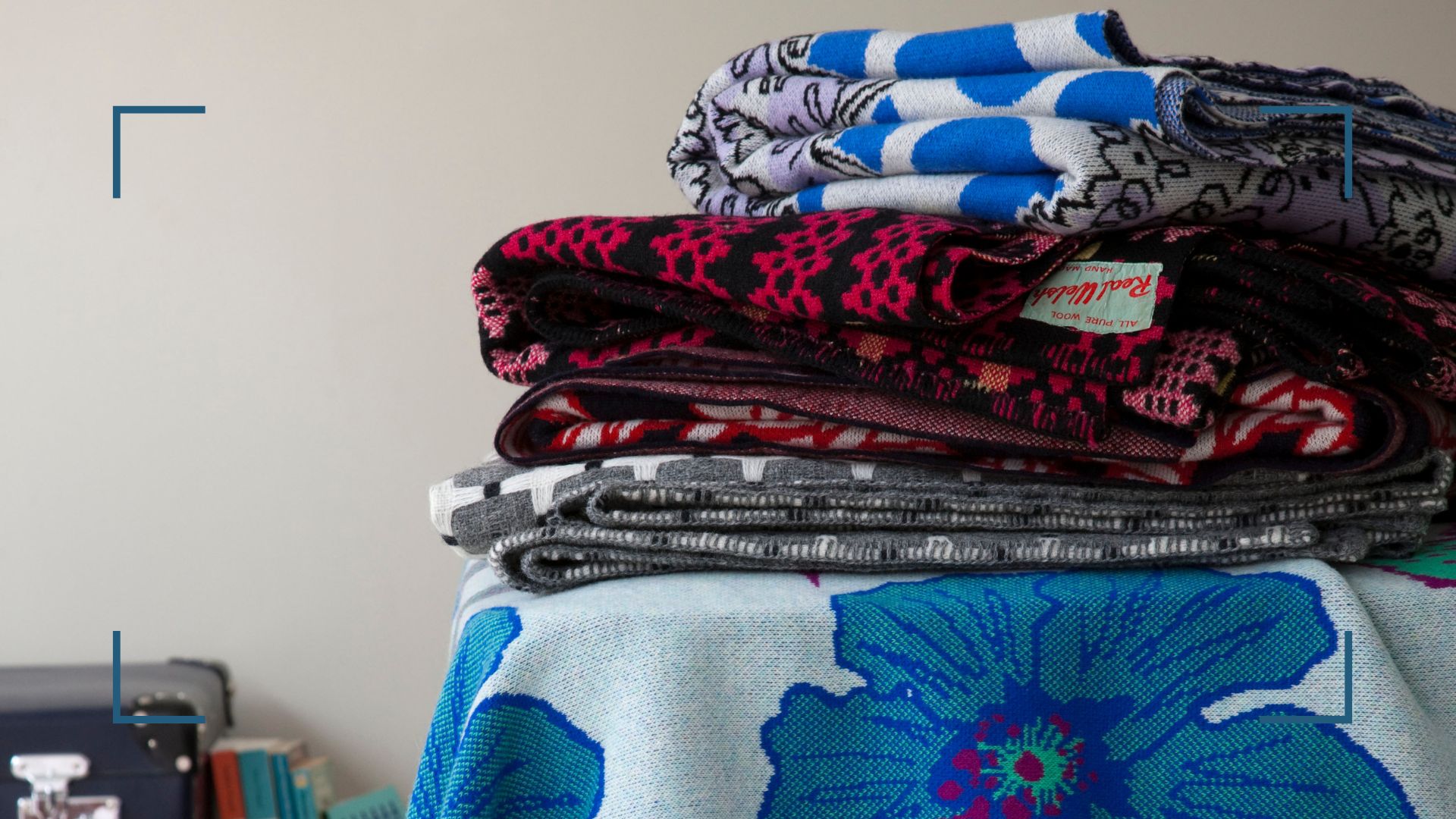

It’s no surprise that many feel confused about how to clean a weighted blanket because the popular accessories are filled with glass beads or heavy material which add weight to the blanket for a snug, comforting feel.
While they are a great way to keep your house warm without the expense of heating, can help reduce anxiety and reportedly improve your sleep when using them knowing how to clean your pick of the best weighted blankets is less straightforward than a standard blanket.
"Weighted blankets are slightly more tricky to wash than your average blanket, as they are made from a range of materials, and can be a lot heavier and more delicate and cumbersome to wash," explains Theresa Schnorbach, psychologist and sleep scientist at mattress and bedding manufacturers Emma. "But with a bit of extra consideration, you can keep it fresh, full-time.”
We asked manufacturers and cleaning experts to share their advice on how to clean a weighted blanket with care and efficiency.
How to clean a weighted blanket
Weighted blankets are a great way to make a home cosy but the experts agree it’s important to find out how to clean a weighted blanket to keep it at its best.
"Weighted blankets can be challenging to clean due to their weight and bulk," explains Catherine Green, a cleaning guru at planet-friendly home cleaning product manufacturer smol. "On top of that, many can’t be put into washing machines. But, whilst handwashing and spot cleaning is best, there are some handy tips for using a machine if you’re lucky enough to be able to."
Here’s what you’ll need:
Sign up for the woman&home newsletter
Sign up to our free daily email for the latest royal and entertainment news, interesting opinion, expert advice on styling and beauty trends, and no-nonsense guides to the health and wellness questions you want answered.
- Mild laundry detergent
- Washing machine
- Clean cloths or paper towels and a soft bristle brush
- Drying rack
We tested all our expert's advice using an Emma Hug Weighted Blanket to get it looking brand new again.
1. Check the care label and capability
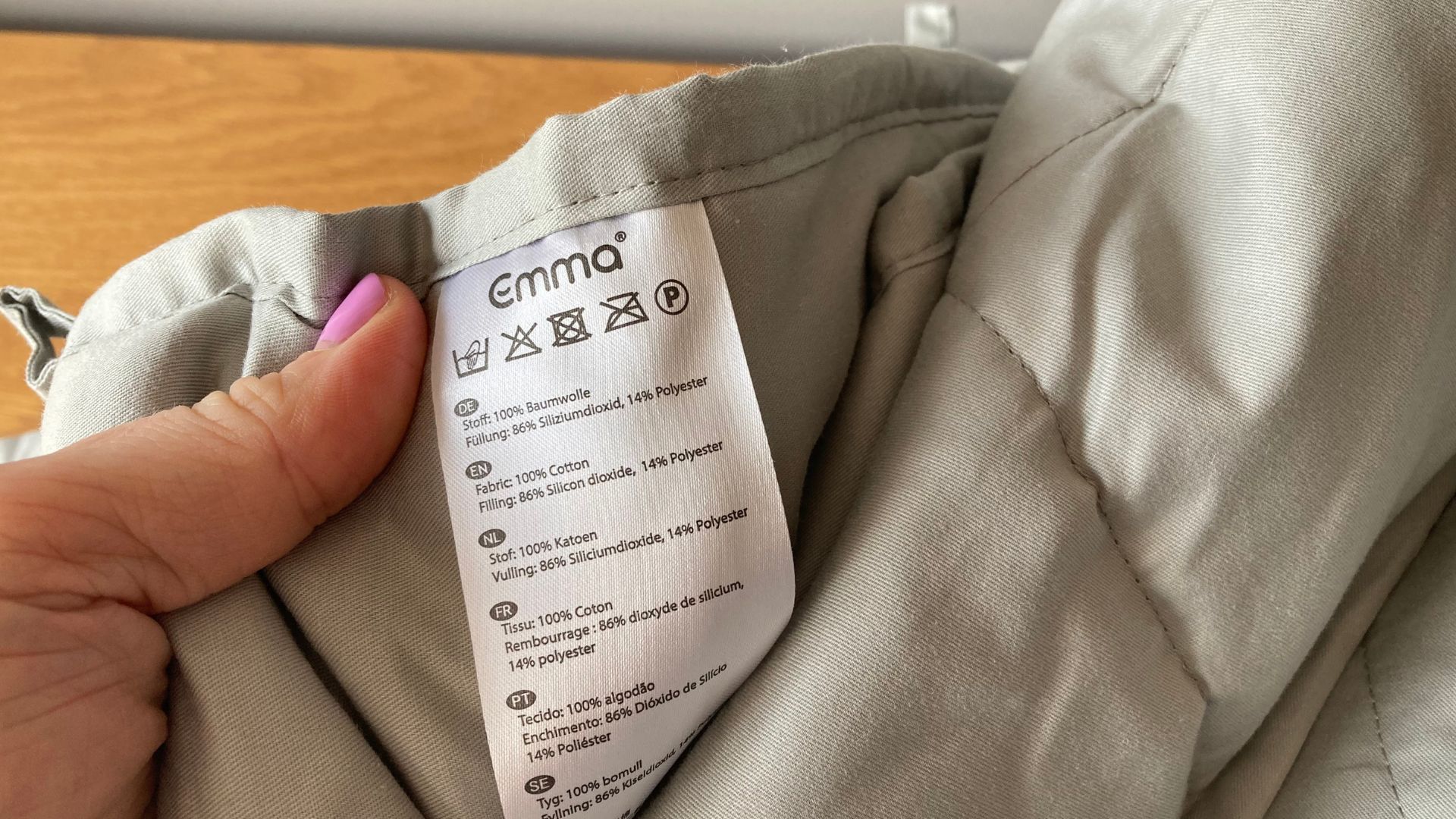
Check the label before cleaning a weighted blanket
As with the best electric blankets, it’s very important to read the care label closely before attempting to wash a weighted blanket. “This will give you specific cleaning instructions,” says Catherine. “Not all weighted blankets can be machine-washed so it's crucial to check. You don't want to overfill your washing machine!”
Even if the label says it is machine washable, it’s important to consider the size of the washing machine too. “It’s important that the weighted blanket fits into the washing machine without much force,” says Gene Fitzgerald, a laundry and water treatment expert at BOS. Among the items you should never put in a washing machine, larger items are a no-no.
“This is because the blanket needs to be able to move around freely so that water and detergent can also be absorbed. When you overfill a washing machine, it can prevent the blanket from being cleaned properly and may also put strain on the machine.”

Catherine has worked for challenger brand, smol, for over 5 years and is an advocate for making more sustainable living accessible to all with a strong focus in planet-friendly cleaning.
2. Spot clean where necessary
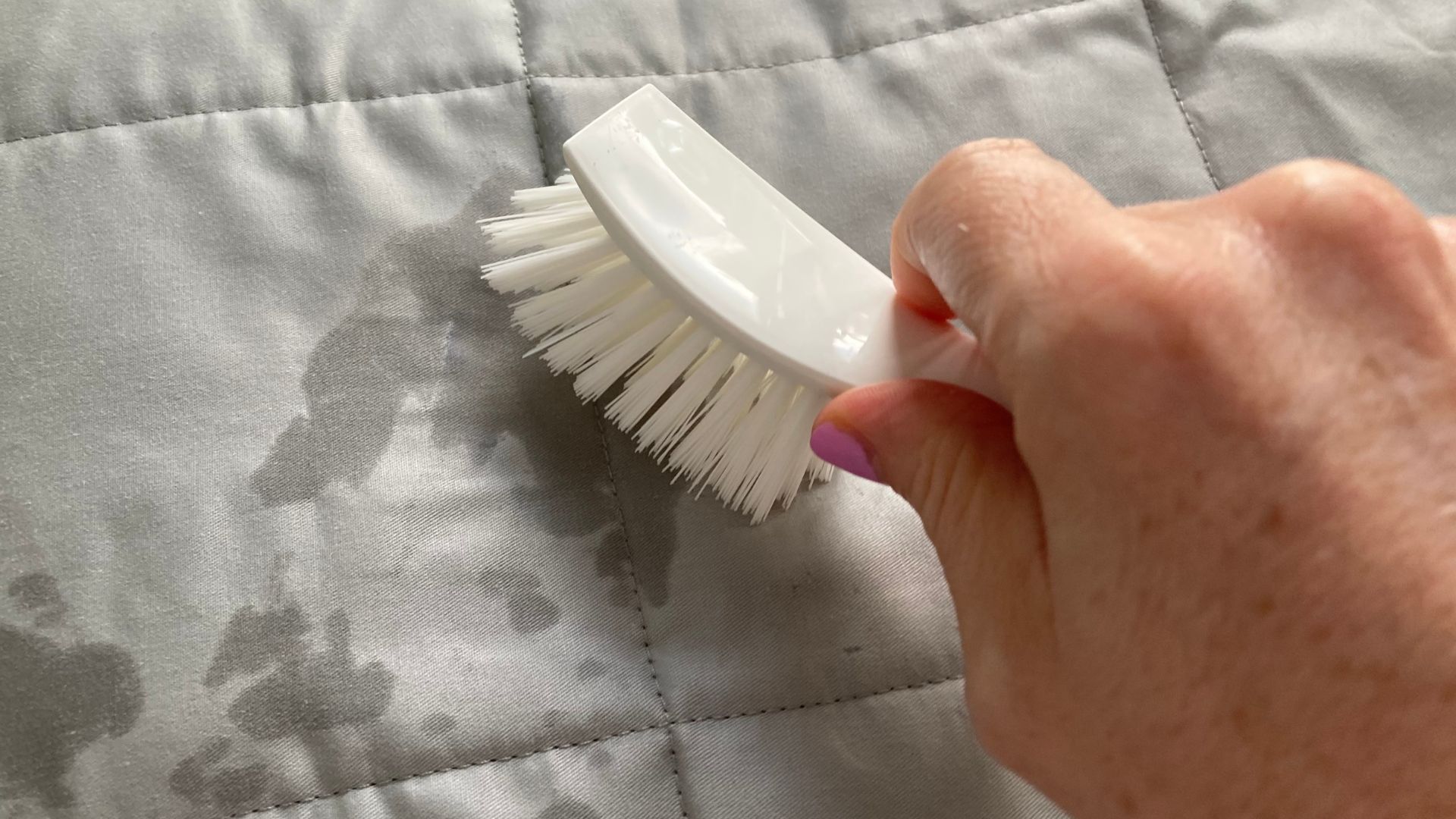
Use a clean cloth or soft brush to spot clean a weighted blanket
In most cases, it is quicker and easier to spot clean a weighted blanket when dealing with everyday stains. These should be tackled in the same way as you might clean a mattress, especially when cleaning a mattress with baking soda where the application is precise.
Theresa advises proceeding carefully and using a mild, eco-friendly soap or detergent. “First, blot the stain gently with a clean cloth or paper towel. Rubbing can spread the stain. Then dilute the detergent it in lukewarm water and apply it to the stained area. Gently pat and rub the fabric together."
"For tougher stains, make a paste with baking soda and water. Apply it to the stain, let it sit for a bit, and then gently scrub with a soft brush.”
Always test an inconspicuous area of the blanket first. “Before cleaning any fabric with a new cleaning agent, it’s important to test a small area of the material to ensure that it’s not going to affect the colour or fabric,” Gene advises.
“If you don't have stain remover, you can also use white wine vinegar with baking soda," adds Catherine. "Gently blot the stain without rubbing, to prevent damage to the blanket's filling.”

Theresa is a psychologist with additional training in Cognitive Behavioural Therapy for Insomnia. She is dedicated to applying science on a real-world level to help people improve their sleep.
3. Wash on a gentle cycle
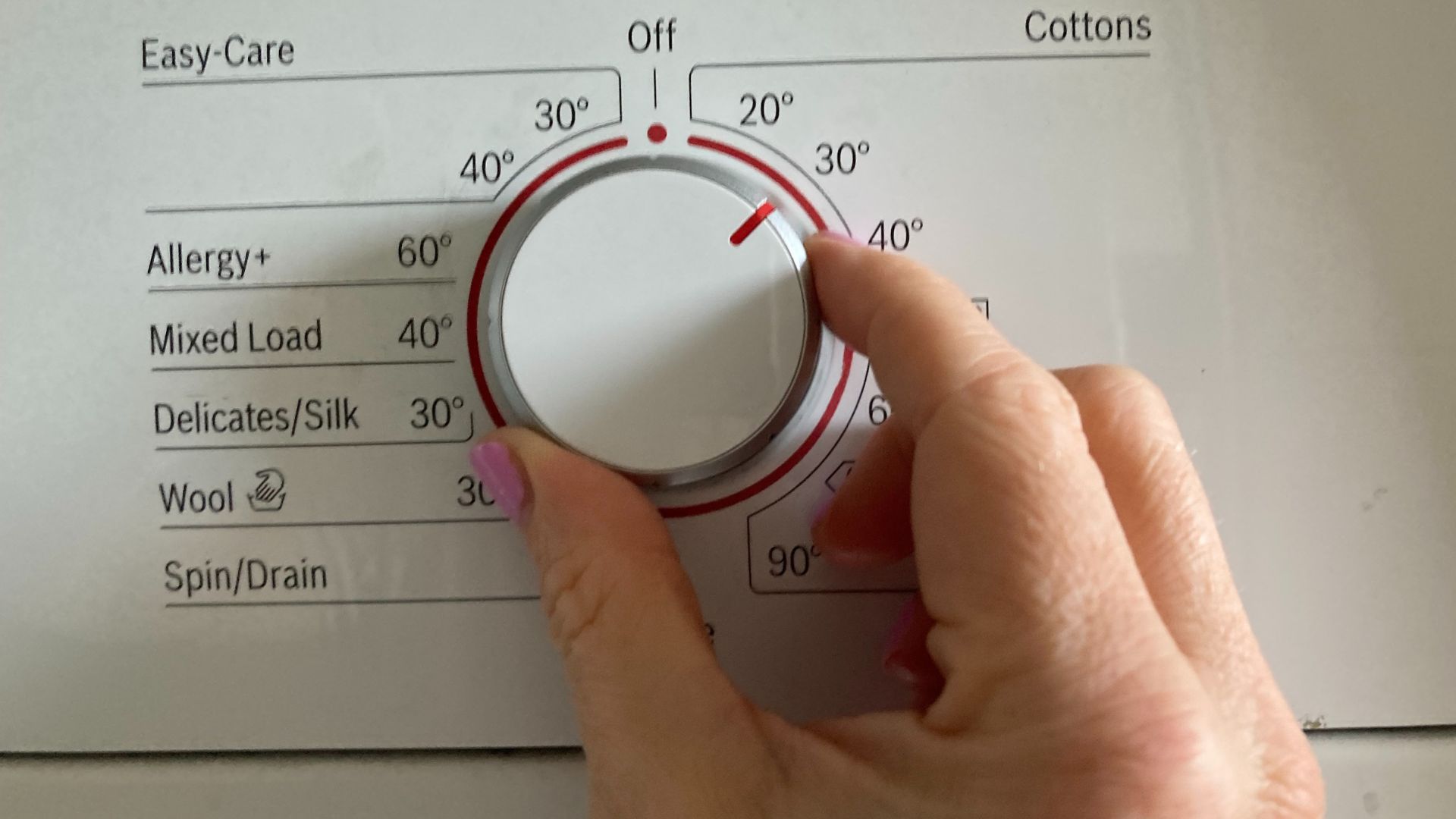
Wash on a gentle cycle
“If machine washing is allowed, use a large-capacity washing machine on a gentle, cold-water cycle. Add a detergent to make sure it gets a proper clean,” Catherine advises. “To prevent strain on your machine, balance the load by washing the blanket separately or with lightweight items. You should also check what weight your machine can handle.”
Remember that just because the blanket weighs less than the maximum capacity your machine can handle, doesn’t necessarily mean it should be cleaned in it.
“Ensure the blanket can move freely inside the drum. If it feels compacted, your machine might be too small,” says Ava Wilson, Chief Editor at online cleaning site Unclutterer. “
Use a gentle cycle. Periodically pause the machine to manually adjust the blanket, ensuring even cleaning and preventing bunching. Opt for a mild detergent as bleach can degrade fabric and filling, so it's best avoided. Skip fabric softeners too as they can leave residues that reduce the blanket's lifespan.”
If there’s any doubt about whether your weighted blanket can fit inside your machine, it may be best to use a commercial machine at a launderette instead.
If you’d rather hand wash your weighted blanket instead, you’ll need to use a clean bathtub. “Fill a tub with cold water and add a gentle detergent,” Ava advises. “Submerge the blanket, gently agitate with your hands, then rinse with clean water. Press gently to remove excess water but avoid wringing.”
4. Dry thoroughly
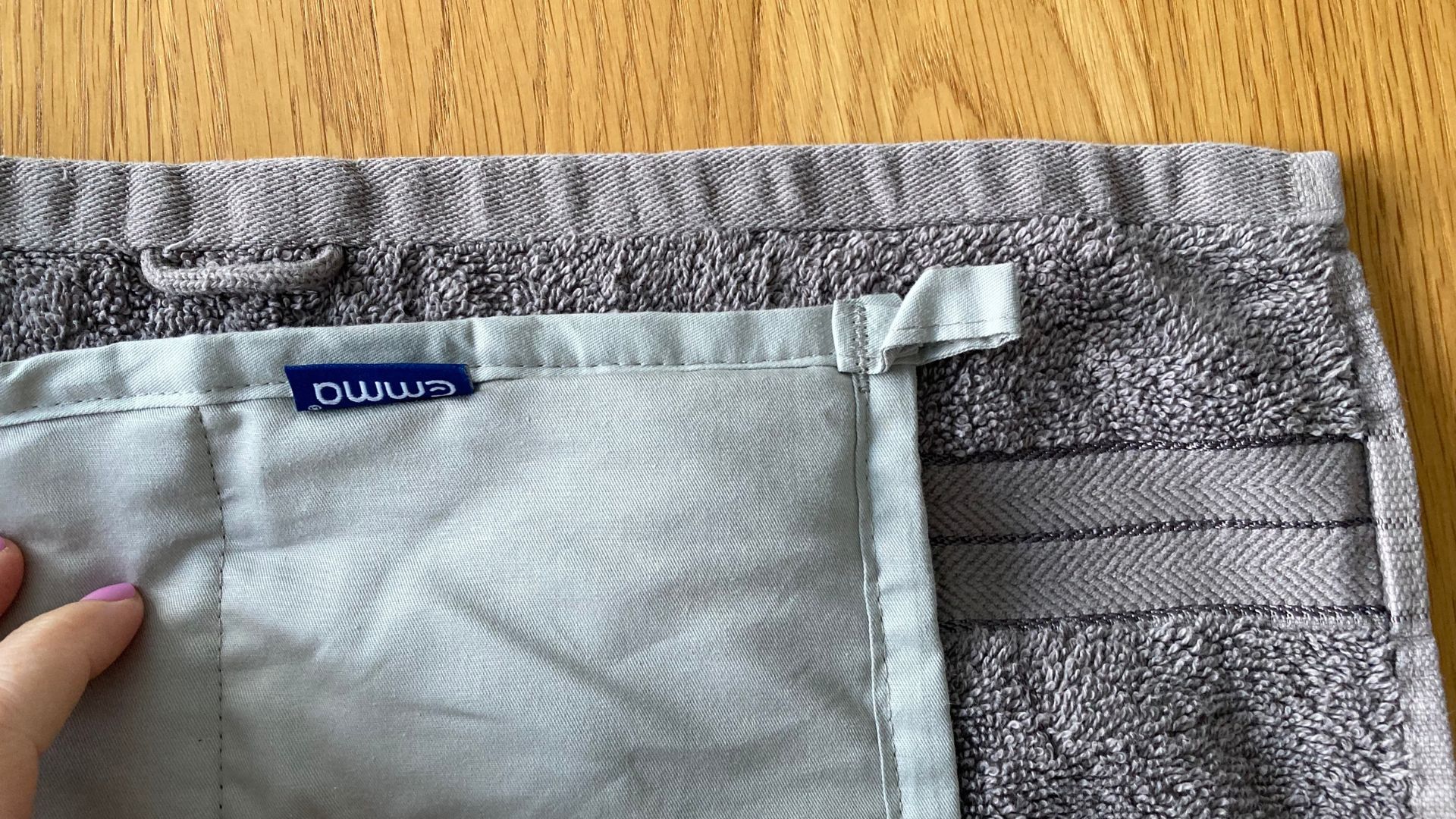
Rolling out a weighted blanket with a towel can help to dry it
“Weighted blankets have a lot of filling and can be trickier to dry than regular blankets,” warns Theresa. “But there are some tricks to have that freshly washed blanket dry in no time."
"Firstly, after washing, gently squeeze out excess water. Avoid wringing or twisting to maintain the fabric's softness. You can also use the towel roll technique. Lay the blanket flat on a clean, dry towel. Roll the towel and blanket together to absorb moisture.”
If the weather is on your side, it’s a good idea to dry the blanket outside where possible. “Hang it or lay it flat on a clean surface,” suggests Theresa. “Keep it away from direct sunlight to prevent fading, but let it enjoy some fresh air.”
Some weighted blankets can be tumbled dried, but again it’s crucial to check your own machine. If it can't go in the dryer, follow our tips for more advice on how to dry clothes indoors.
“Dry it with care,” Catherine says. “Use a large-capacity dryer on a low-heat setting. If you do decide to air-dry the blanket, ensure it is evenly spread to prevent clumping.”
Don’t dry in a hurry. “A weighted blanket can take a while to dry though because of its dense filling,” says Gene. "Regularly shaking it can help with even drying too. If you do want to use a tumble dryer then including a few dry and clean towels into the cycle can help to absorb moisture and quicken up the drying process.”

Gene has worked with BOS since the very beginning, writing, editing, and supporting people in making the water in their homes better through water filtration. As head of content, Gene is responsible for the creation of new product reviews and contaminant removal guides.
5. Fluff and redistribute the filling
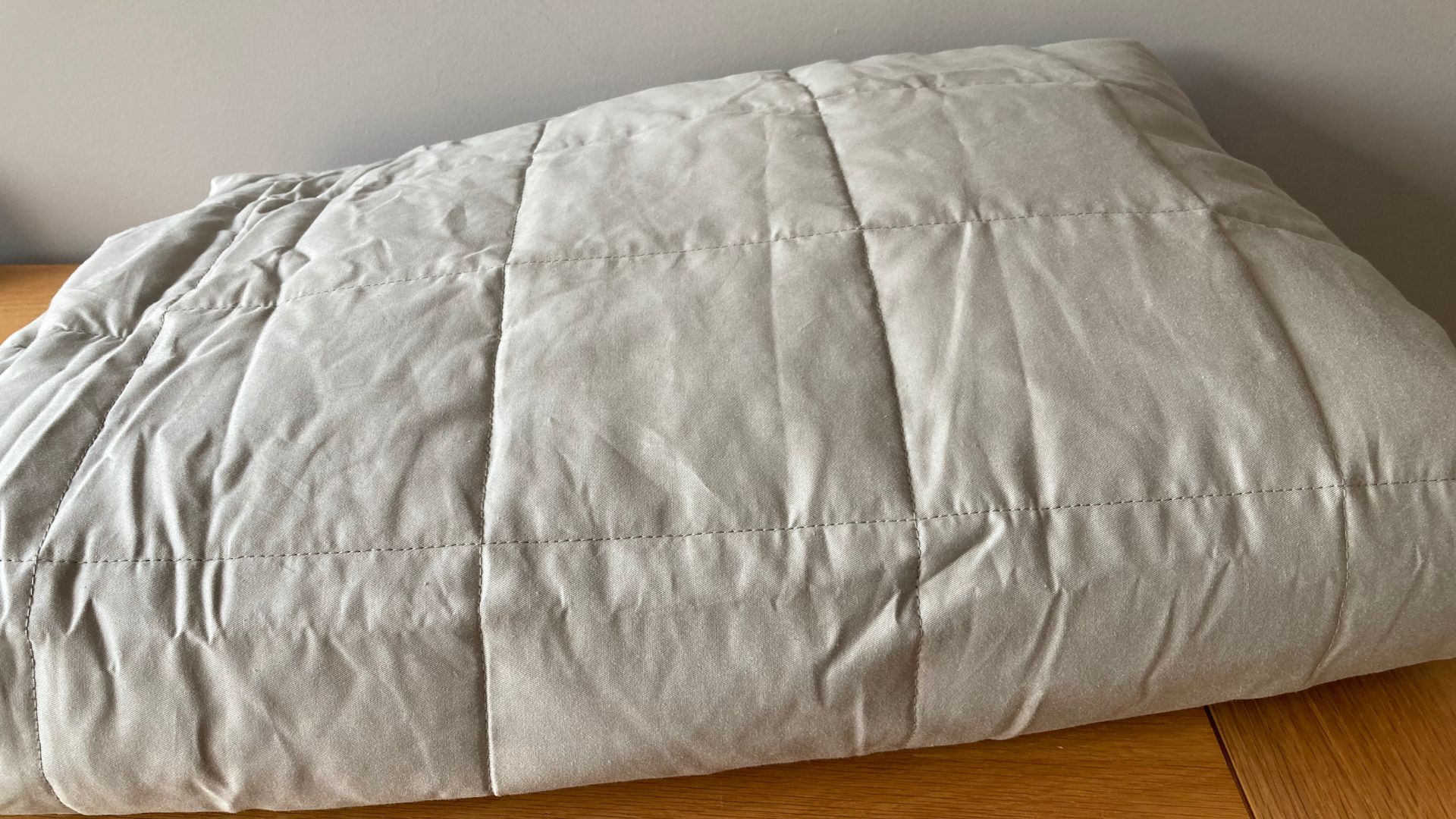
The Emma Hug Weighted Blanket we used to test how to clean a weighted blanket
“After washing and drying, fluff the blanket to redistribute the filling evenly," advises Catherine, "and you will have a lovely fresh blanket, ready to snuggle again.” The same principle can be applied when washing pillows to restore the items to their original plumpness.
If your weighted blanket doesn’t already have a cover, it’s worth investing in one once it is clean to avoid having to wash it again. You could even use a duvet cover, size permitting, which can be washed quickly and easily.
This is particularly useful for anyone with a smaller washing machine or for those with pets or allergies who would prefer the blanket be cleaned more often.
FAQ
Are weighted blankets machine washable?
It depends. Many are but you should always check the label on your blanket carefully before putting it in the washing machine. Some may recommend hand washing or even spot cleaning and it’s important to follow the specific instructions or you may damage the filling. If it can be machine-washed, you should still proceed with caution.
Use a gentle cycle and a mild detergent, wash the blanket separately and never use a product containing bleach. If the blanket is over 9kg, it will be too heavy to be washed in most domestic washing machines, even if the label says it can be. In this case, it’s best to wash the blanket in a commercial machine in a laundrette.
How do you clean a weighted blanket with glass beads?
Most of the best weighted blankets now contain micro glass beads, as they don’t go mouldy, are hypo-allergenic and won’t clump during washing. Generally, weighted blankets filled with glass beads can go in the washing machine, as long as it doesn’t exceed your machine’s capacity.
Always check the care instructions to make sure the filling is machine washable and wash the blanket by itself in the machine on a gentle cycle using mild detergent.
How do you wash a weighted blanket that says do not wash?
If the label on your blanket says it cannot be washed, do not put it in the washing machine. Instead, check whether the instructions specify whether it can be hand washed or if it is spot clean only.
If it can be hand washed, it’s advisable to do this in the bath or use a large basin-make sure this is clean before half-filling with warm water. Add a mild, bleach-free detergent and submerge the blanket, moving it around slightly to make sure it is clean. Empty the bath, refill it with clean water and submerge the blanket again until all the detergent has been removed. This may need repeating several times.
If the blanket can only be spot-cleaned, apply a solution of warm water and mild detergent and gently pat the stain. Let it sit for ten minutes or scrub it with a soft brush if the stain is severe. Use another clean damp cloth to remove all the detergent and allow it to dry completely before using the blanket again.
Once the blanket is clean, it’s advisable to use a removable cover or even a duvet cover that can be easily machine-washed to keep your blanket in tip-top condition.
How often should you clean a weighted blanket?
Don’t worry, you won’t need to clean it as often as other bedding. “However, the frequency of their washing does depend on their usage,” advises Gene. “For example, if they’ve been stored away, it’s a good idea to wash them before using them to remove any dust or even pests."
"If you use them regularly at night, you might want to give them a wash during mid-season too. If you have pets, suffer from allergies or the blanket comes in contact with skin every night, monthly cleaning is ideal for optimum condition.”
Remember that weighted blankets are generally used in winter, so it’s likely you will store it away over summer. Ava suggests one final clean before you store it away. “Always ensure the blanket is clean before storing to prevent contaminants from degrading materials.”
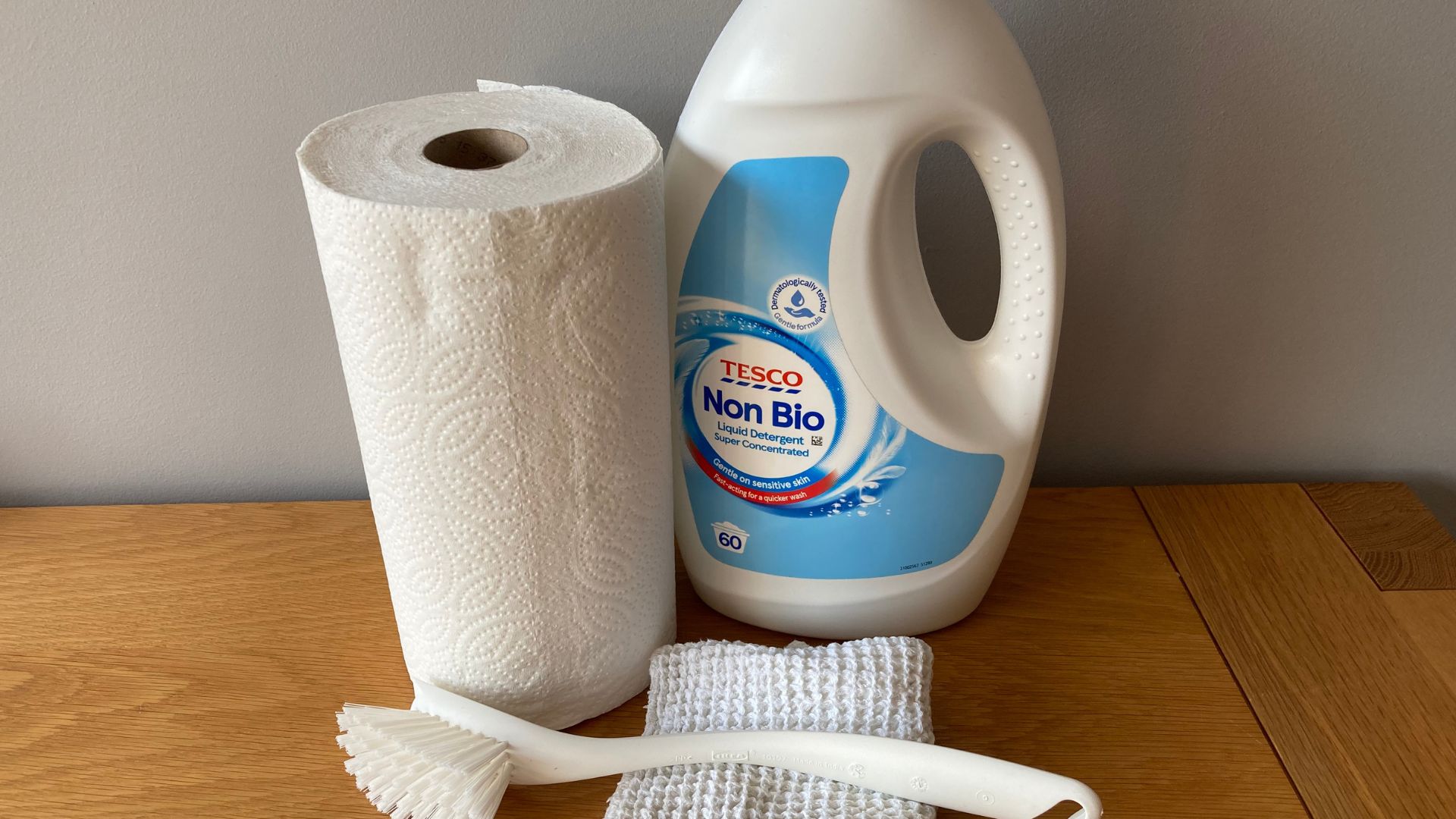
What you'll need to clean a weighted blanket
Can you wash a 6kg weighted blanket?
Yes, most domestic washing machines are big enough to handle a 6kg weighted blanket. Double check the capacity of your machine, be sure you don’t have to force it inside to fit and don’t wash anything else with the weighted blanket.
Weighted blankets over 8kg would be better washed in a commercial machine in a launderette to avoid damaging smaller washing machines and ensure a thorough clean.
Now you know how to clean a weighted blanket, but experts say prevention is best when it comes to keeping it cleaner for longer.
“Consider a no-food zone,” says Theresa Schnorbach. “Avoid eating while snuggling under the blanket. Food stains can be tough to remove. And if you have furry friends, be cautious. Keep them clean or place a pet-friendly cover over the blanket.”

Siobhan Grogan is a freelance travel, shopping and lifestyle writer. She began her career at NME interviewing everyone from Paul McCartney to Amy Winehouse and has since written reviews and features for Mail on Sunday, Telegraph, Glamour, Red, Harper’s Bazaar, Cosmopolitan, Independent and Grazia.
She writes product reviews and shopping guides on everything from food and wine to fashion and beauty and in her spare time – fortunately – loves food, wine, fashion and beauty. A travel obsessive, she’s also a mum of two and loves nothing more than dragging her children everywhere from Glastonbury to Greece at every possible opportunity.